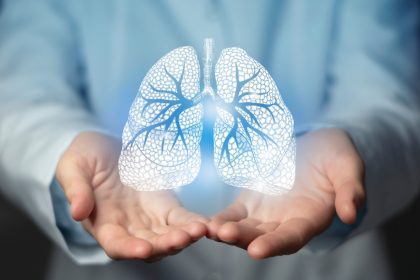For those pursuing active lifestyles, cardiovascular fitness typically dominates the conversation. Yet the specific health and function of the lungs themselves often receive less attention, despite being crucial performance limiters. Recent advances in respiratory physiology suggest that targeted approaches to lung health can unlock significant improvements in athletic capacity.
Beyond the obvious benefit of delivering oxygen to working muscles, well-functioning lungs help remove metabolic waste products, regulate blood pH, and even influence recovery times. For anyone from serious competitors to casual exercisers, optimizing respiratory health can be the difference between hitting plateaus and achieving breakthrough performances.
Understanding the athletic lung
The respiratory system adapts to regular exercise in remarkable ways. Active individuals typically develop greater lung capacity, more efficient breathing patterns, and stronger respiratory muscles compared to sedentary counterparts. These adaptations don’t happen passively, however—they require consistent stimulus and proper support.
Lung function encompasses several measurable parameters: vital capacity (the maximum amount of air you can exhale after a deep breath), respiration rate, oxygen uptake efficiency, and the strength of breathing muscles like the diaphragm and intercostals. Each component contributes to overall respiratory performance and can be targeted for improvement.
For active individuals, these metrics directly influence endurance, power output, and recovery capacity. When lung function is suboptimal, it creates a cascade of limitations throughout the body, from reduced oxygen delivery to muscles to compromised metabolic function.
Strategic approaches to respiratory health
Here are five tips to enhance lung function for active lifestyles.
Respiratory muscle training
The muscles that power breathing respond to targeted training just like other muscle groups. Specific devices that create resistance during inhalation or exhalation can strengthen the diaphragm and intercostal muscles by up to 30% in consistent users.
Research indicates that this type of training can be particularly beneficial for endurance athletes. A six-week program of respiratory muscle training improved cycling time trial performance by 3.8% among trained cyclists, a significant gain for those who typically measure improvements in fractions of a percent.
Respiratory physiologists suggest incorporating this training 3-5 times weekly, using progressively increasing resistance. The sessions typically last 5-10 minutes and can be performed independently of other workout routines.
Altitude exposure and simulation
The reduced oxygen availability at higher elevations forces respiratory adaptations that persist even when returning to lower altitudes. These include increased red blood cell production, enhanced oxygen-carrying capacity, and improved breathing efficiency.
While traditional altitude training requires geographic relocation, modern approaches offer more accessible alternatives. Intermittent hypoxic training using specialized equipment allows athletes to experience simulated altitude exposure for short periods while remaining at sea level.
A protocol of 60-90 minutes of simulated altitude exposure (3,000-4,000 meters) three times weekly has been shown to improve maximal oxygen uptake by 4-7% after four weeks. These adaptations directly benefit performance in oxygen-demanding activities from running to high-intensity interval training.
Breathing pattern retraining
Many active individuals, approximately 52% according to respiratory function assessments, develop dysfunctional breathing patterns over time. Common issues include shallow chest breathing, irregular timing, and poor coordination with movement.
Breathing pattern retraining focuses on restoring diaphragmatic breathing, optimizing inhalation-exhalation ratios, and coordinating breath with movement. These techniques originated in medical rehabilitation but have been adapted for performance enhancement.
The most effective protocols combine awareness training (recognizing current patterns) with practice sessions incorporating diaphragmatic breathing during rest and progressively more challenging activity levels. Respiratory specialists recommend daily practice of 5-10 minutes to establish new patterns.
Environmental and air quality management
For those in urban environments, air quality represents a significant yet often overlooked factor in respiratory health. Particulate matter, ozone, and other pollutants can trigger inflammation in the airways and reduce lung function in otherwise healthy individuals.
Practical approaches include monitoring local air quality indexes, scheduling outdoor activities during lower pollution times, and creating clean-air zones in living and sleeping spaces with appropriate filtration. High-efficiency particulate air (HEPA) filters can remove 99.97% of airborne particles as small as 0.3 microns.
For those training in highly polluted areas, specially designed pollution masks rated N95 or higher can filter particulate matter during exercise, though they do create some additional breathing resistance that requires adaptation.
Nutrition for respiratory health
Emerging evidence points to specific nutritional strategies that may support lung function and protect against exercise-induced respiratory stress.
Antioxidant-rich foods help combat the oxidative stress generated during heavy breathing during exercise. Specific compounds showing promise include quercetin (found in apples and onions), omega-3 fatty acids, and vitamin C. These nutrients appear to reduce exercise-induced bronchoconstriction and support recovery of respiratory tissues.
Hydration status also directly affects the mucus lining of the respiratory tract, with dehydration leading to thickened secretions that can impair airflow. Respiratory health experts recommend consuming an additional 500-600ml of fluid for each hour of moderate exercise beyond normal daily needs.
Integrated approaches for different activity levels
How these tips should be implemented varies based on activity level and goals.
For endurance athletes
Those focusing on activities like running, cycling, or swimming benefit most from comprehensive respiratory training. Combining respiratory muscle training with breathing pattern retraining 3-4 times weekly can yield measurable performance improvements within 4-6 weeks.
Timing matters, respiratory training is best performed separate from primary workouts to avoid competing fatigue. Many endurance coaches recommend these sessions during recovery days or as morning routines before main training sessions.
For strength and power athletes
Individuals focused on resistance training or power sports have different respiratory demands. For this group, breath control during exertion becomes paramount, with techniques like the Valsalva maneuver playing important roles in core stabilization and force production.
Training should focus on coordination of breathing with movement patterns and recovery breathing between high-intensity efforts. Respiratory specialists who work with strength athletes recommend practicing controlled breathing patterns with submaximal loads before attempting to integrate them into maximal efforts.
For recreational exercisers
Those exercising for general fitness can benefit from simpler approaches. Focusing on establishing proper diaphragmatic breathing during daily activities creates a foundation that carries over into exercise. Adding 5 minutes of conscious breathing practice before workouts can improve oxygen delivery and reduce perceived exertion.
Recognizing respiratory limitations
While some reduction in breathing comfort is normal during intense exercise, certain symptoms warrant attention and potentially medical consultation.
Wheezing or pronounced whistling sounds during exertion may indicate exercise-induced bronchoconstriction, a condition that affects approximately 15% of the general population and up to 45% of elite winter sport athletes. This condition responds well to proper management strategies but requires proper identification.
Breathing difficulties that persist long after activity ends, pronounced chest tightness, or unusual fatigue may indicate underlying respiratory issues that deserve medical evaluation. Pulmonary function testing can provide valuable insights for active individuals experiencing these symptoms.
The future of respiratory optimization
Emerging technologies are expanding options for respiratory health enhancement. Portable devices now offer real-time feedback on breathing patterns during activity. Personalized respiratory training programs based on individual limitations are becoming more accessible through specialized sports medicine facilities.
For serious competitors, comprehensive respiratory assessment is increasingly becoming standard practice, similar to metabolic testing or biomechanical analysis. These assessments identify specific limitations and allow for targeted interventions.
The growing understanding of respiratory physiology continues to reshape how active individuals approach lung health, not as a fixed constraint but as a trainable system with significant performance implications. By incorporating these tips, both elite athletes and recreational exercisers can breathe easier and perform better.


















